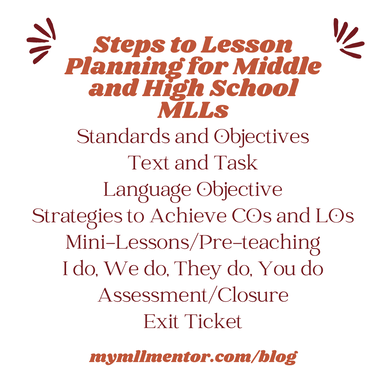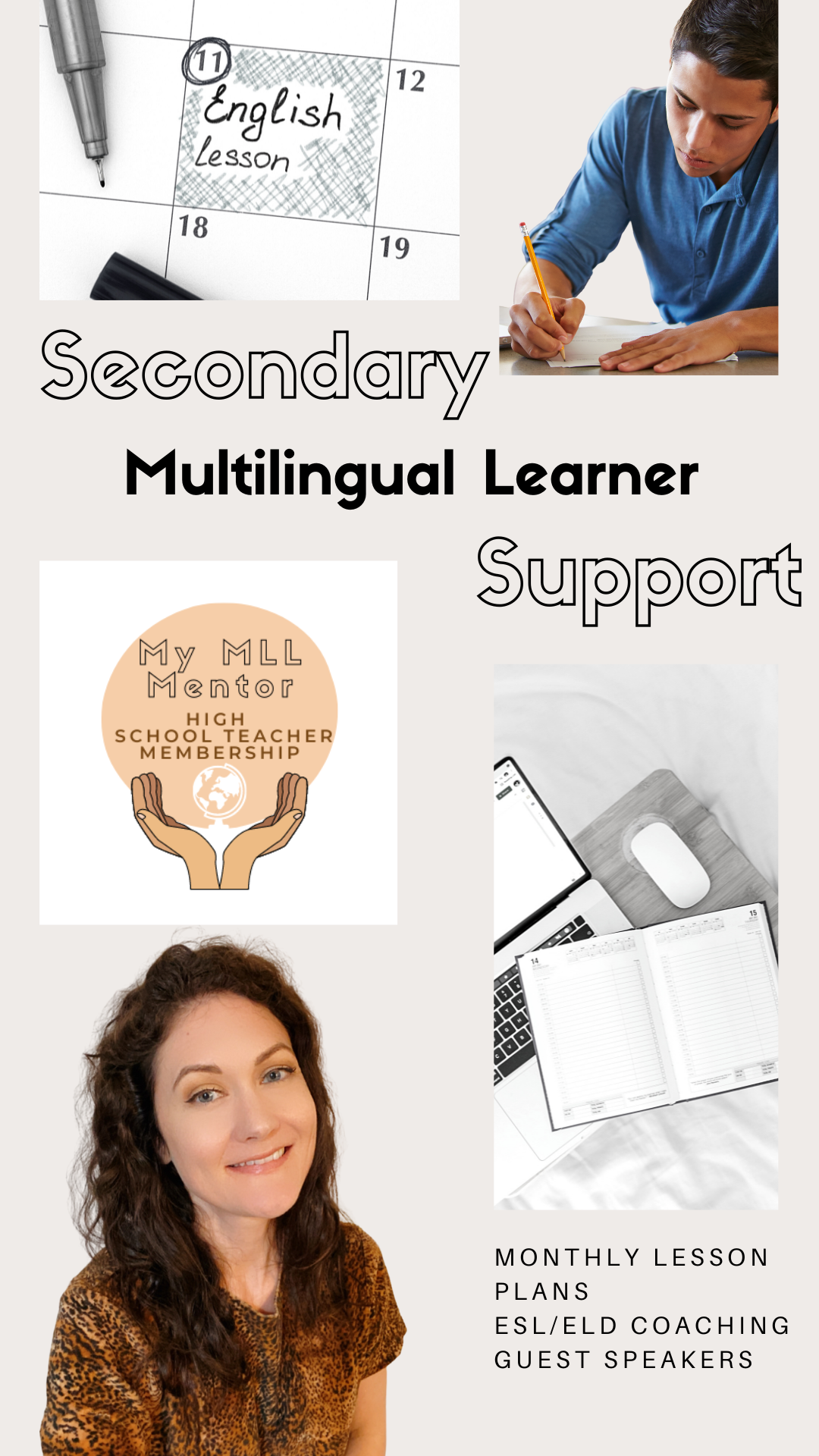|
This post has been updated on July 8, 2022.
Here is your step-by-step guide for writing an ESL high school lesson plan for your multilingual learners! This guide is also beneficial for middle school teachers and even those who co-teach. The more you get into a process and repeat it again and again, the easier it gets- and that is the goal, teacher friends, so you don't have to spend your whole planning period or take planning home (unless you want to of course!). 1. Start with your standard and content objective. You may have a curriculum and you may not. Whatever the case, we need to start with these and work from there. Let's use an example from my Romeo and Juliet lesson plan so you can see how I might start:
I usually focus on reading and writing and then add in my listening and speaking tasks, but sometimes my tasks may be more speaking and listening heavy. This is up to you. If I am doing reading and writing to start with, I know that I will probably be having them use some sort of graphic organizer to read with and for writing I will have the same. I love to use a good Somebody Wanted But So organizer for summarizing. It's my go-to! 3. Make your language objective.
4. Choose strategies to achieve the language and content objectives. This kind of goes back to our task. For example, if I know that I want to use a graphic organizer while doing reading, I would then decide what reading skill I want to focus on and pick that organizer that matches. Same for writing- if I want to do narrative writing, I will need to have an organizer for that. Then I need to think of what scaffolds my students need and make sure they are in the LO (language objective). More on strategies below! Then decide... 5. What will you pre-teach? What mini-lessons might you use?
6. Structure- I do, We do, They do, You do. I have found that the GRR (Gradual Release of Responsibility) has been a great structure for my multilingual learners. I can introduce a text or concept, we can practice together, they can practice in partners, and then I can have them practice solo to see if they are grasping the concept and skill. It's a great way to scaffold the learning as a whole! 7. Assessment and Closure- How will you wrap up your lesson? Here is an assessment choice board for some ideas! 8. Exit Ticket- There are tons of exit ticket ideas, but it's a good idea to get students using whatever language focus they used during class. Having students complete a simple sentence frame using the target vocabulary and sentence structure is a great start. Here are some more ideas for your toolbox! Making lesson plans doesn't have to be overwhelming or hard. You just need a process and it may take a little time to perfect it, and that's okay! This is also not the only way to lesson plan; it's just what I have found works for me, my students, and my admin who observes my classes!;) If lesson planning is something that you find to be something you'd like to lessen or make easier, check out my high school teacher membership, My MLL Mentor, to get lesson plans and instructional strategy inspiration and coaching straight to you!
0 Comments
Leave a Reply. |
AuthorI support middle and high school teachers through monthly lesson plans, coaching, and guest speaker offerings in our Secondary ESL Teacher Membership. Archives
April 2023
Categories
All
|



 RSS Feed
RSS Feed
